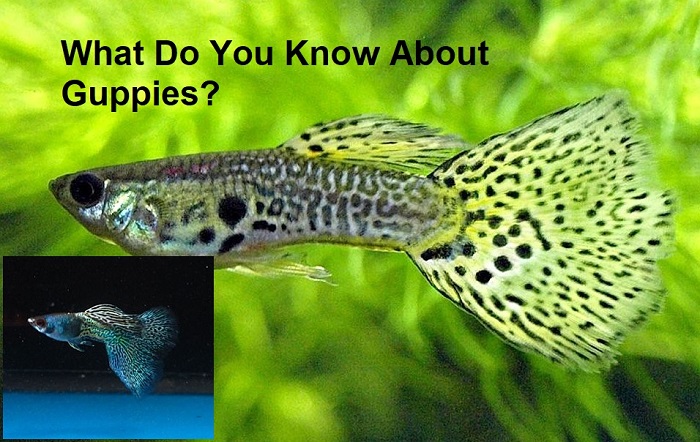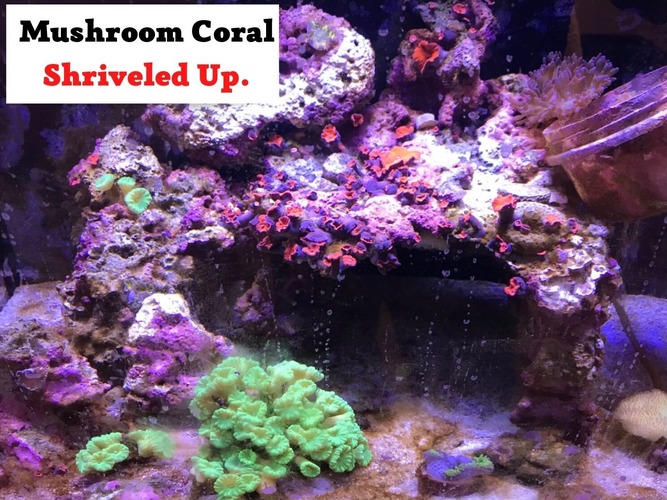Guppies are freshwater fish and are found in tropical climates. Their origin is South America. There are various types of guppies classified using multiple factors. They are classified based on species, colors, body patterns, and the shape of the tail. However, the internationally recognized types of guppies are twelve.
Green lace guppies are classified based on their body color. They are also called American green guppy or green lantern lace guppy. Just like other guppies, they are common aquarium pets. However, they are pricey because breeding them is difficult. The green color is mainly mixed with shimmering blue, making it difficult to breed pure green lace guppies.

Other interesting facts of green lace guppies include their color being attractive, easy to keep, co-existing peacefully with different kinds of fish, and not fussy when eating; hence, feeding them is easy. The green lace guppy is suitable for beginners.
Some interesting facts that you should not miss for the survival of the green lace guppy include:
- Favorable foods
- Tank conditions and tank mates
- How to breed the green lace guppy
- Diseases affecting the green lace guppy and treatment
Suitable foods for green lace guppies
Green lace guppies are omnivores. Always feed them on a balanced diet to promote their health, make them more active, and enhance their color. They love to feed on algae and proteins such as insect larvae and plants. If you decide to buy processed foods for your fish, ensure it has a variety of ingredients in different food groups to ensure they get all the nutrients. Some suitable foods for the green lace guppies include:
Vegetables. Feeding vegetables to your green lace guppies complements the protein diet with vitamins, energy, minerals, and fiber. Some vegetables you can feed to the guppies include:
- cucumber;
- zucchini;
- tomatoes;
- lettuce;
- spinach;
- peas;
- sweet corn;
- potatoes;
- carrots;
- pumpkins;
- bell peppers.
If you have never fed them a given vegetable before, place a small amount to test whether they will love it. Avoid broccoli, cabbage, and other vegetables with the smell of onions and the jelly parts of vegetables. Clipping the veggies to the side makes it easier to feed the fish rather than leaving it to float. A clip with a suction cup manages to keep the vegetables in the right place.
Preparation of the vegetables is also essential. It determines whether the green guppies will feed on the vegetable. For vegetables that contain jelly bits, remove the jelly bits and chop them into small pieces. Some require softening by blanching. They include peas, sweet corn, etc. Others such as bell peppers require seeds to be removed and softened by blanching.
Dry foods. Mainly these are processed foods. Ensure that the food you buy is of high quality. Some of the high-quality fish foods contain:
- Whole fish to provide proteins and the oils that your fish need
- They are freshwater blue-green algae that provide vitamins, minerals, and proteins.
- They are marine microalgae that provide vitamins and minerals. It is easy to digest. Avoid fish foods that contain wheat, soy, and generic fish as they are poor-quality feeds.
Frozen foods. These include brine shrimp and bloodworms. Avoid tubifex worms and daphnia. The tubifex worms contain harmful bacteria, and daphnia removes oxygen from the tank.
Only feed your pets in small quantities, preferably in the morning and at night. Food remains should be removed after 3-4 hours to avoid contaminating the tank.
The lifespan of green lace guppies
The lifespan of these guppies is usually two years. However, the lifespan can be increased or decreased by several factors:
- Quality of water
- Quality of the food they take
- Genetics of the fish
- Water parameters
- Stress
- Keeping the guppies with predator fish
- Overcrowding
Best tank conditions for green lace guppies
Keeping the fish in suitable tank conditions increases their lifespan and protects them from diseases.
Some suitable conditions include:
- The water in the tank should be freshwater or hard water.
- Aquarium size should be in the ratio of 1:1, 1 gallon for each guppy. The tiniest size should be 5 gallons, but 10 gallons’ size is easier to clean since the water cycles easily.
- The tank should contain substrates such as sand, rock, gravel, vegetation covering at least 2 inches at the bottom of the tank.
- Water temperature should be 74-82 F or 22-28 C.
- The tank set up should contain plants, ornaments, and caves.
- pH should range from 6.8 to 7.6
- water hardness should be 8-12 dGH water filters are not a must, but they assist in maintaining a good quality of water
- Bubblers are essential for the proper aeration of water.
- Extra lighting if the tank does not access natural light or it has too many plants
- Water heater to maintain the proper temperature range.
How to keep green lace guppies in a tank/aquarium
The green guppies love company. Keep at least three guppies in a tank. If you do not want to keep both genders, you can keep males only as they are more colorful than females. If mixing the genders, observe the ratio 1 to 2 of males to females.
Green lace guppies’ aquarium mates
The fish are peaceful, and they can co-exist with other fish. However, please do not keep them with large, aggressive fish because they will be eaten up. They love swimming at the top, and therefore they should be kept with other small peaceful fish that love to swim in the middle or at the bottom. Some suitable tank mates for the green lace guppies include:
- Cardinal tetras
- Cory catfish
- Harlequin rasboras
- Mollies
- Dwarf chain loaches
- Rummy nose tetras
- Kuhli loaches
- Sparkling quoramis
- Zebra danios
Breeding green lace guppies
Breeding green guppies involves choosing a male and two or more females, all with pure green color, to mate and produce offspring with intensified green color. Achieving a green color is tricky as it often mixes with blue colors. The gestation period is between 22-28 days, with females giving birth to fry. The fry matures within 10-20 days. When breeding the guppies, always use a special tank away from the main tank.
How to distinguish male and female green lace guppies
Male and female green guppies can be distinguished based on size, color, shape of tails, and fins. Males are smaller and have brighter colors and longer tails and fins. The female green guppies have huge abdomens and have shorter tails and fins. Males are smaller than females, measuring 1.5-3.5 cm or 0.6-1.4 inches. Females measure 3-6 cm or 1.2-2.4 inches long.
Diseases Affecting green lace guppies
Like the other guppies, the green guppy is prone to diseases, especially if it is not kept in the right conditions. The conditions include the following.
Protozoan disease/guppy disease
The disease is due to the parasite Terahymere sp., which thrives in poor-quality water that is not heated well. The disease symptoms include loss of appetite, poor breathing, and excess slime. It is treatable and avoidable by maintaining high-quality water conditions and proper heating.
Ich
It is a common condition in freshwater fish. It leads to the development of white spots on the fish’s skin, and the fish rubs itself frequently on rough surfaces. A parasite, Icithyophthirius multifillis, causes it. It is treated by isolating the sick fish and increasing the water temperature to kill the parasite eventually. A tablespoon of salt in 5 gallons of the water tank is also a viable treatment.
Fin and tail rot.
The rotting is caused by bacterial infections resulting from stress, overcrowding, and variation in water parameters. It is characterized by discoloration, ragged, frayed, and shortened fins and treated by changing the whole amount of water and using antibiotics as instructed by a veterinarian.
- High Nitrite and No Ammonia in Aquarium: What Are the Reasons? - May 2, 2023
- Mystery Snail Shell Peeling – What’s Wrong with Your Pet? - September 26, 2022
- What is Wen on Goldfish? Investigating The Fish with the Hood - June 20, 2022




